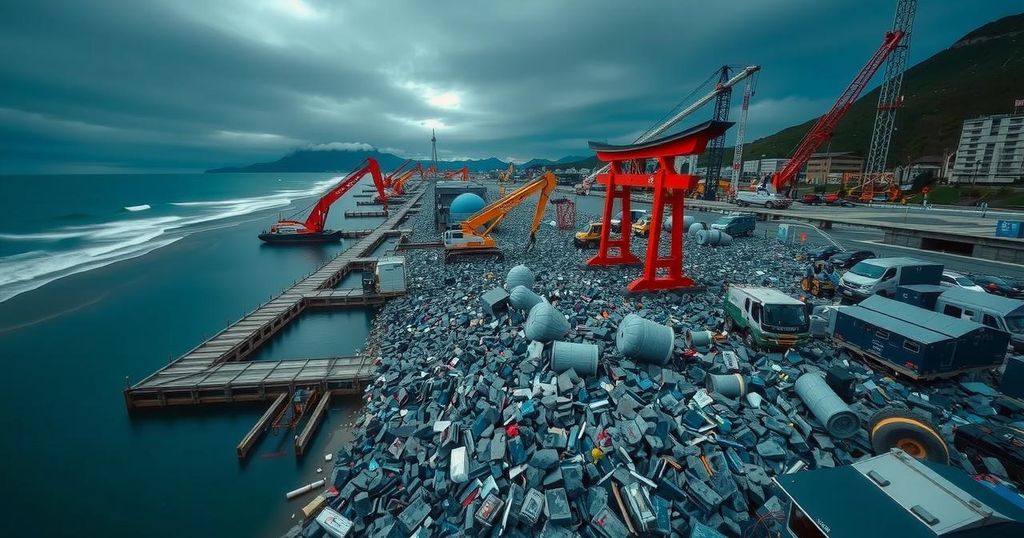The 2011 Tohoku Earthquake and Tsunami: Aftermath and Recovery

On March 11, 2011, a massive earthquake struck Japan, triggering a devastating tsunami that resulted in over 19,300 deaths and widespread destruction across coastal areas. The tsunami predominantly impacted Miyagi Prefecture, while subsequent nuclear incidents at the Fukushima Daiichi plant raised major public health concerns, leading to significant evacuations and long-term safety issues.
The 2011 Tohoku earthquake and tsunami represented one of the most catastrophic natural disasters in Japanese history. Initiated by a magnitude 9.0 earthquake off the northeastern coast of Japan on March 11, 2011, the subsequent tsunami wreaked havoc across coastal regions, leading to a significant loss of life and widespread destruction. Initial casualty reports indicated the death toll was in the hundreds, but as rescue operations unfolded, this figure surged dramatically. Within two weeks, the official Japanese government count had surpassed 10,000 deceased, with more than 15,000 individuals classified as missing and presumed dead, a number that would peak at approximately 28,500 confirmed dead or missing. However, by the end of the year, that estimate decreased to about 19,300 as more individuals were accounted for. The tsunami’s impact was particularly devastating; it resulted in the inundation of towns, cities, and extensive farmland, with entire communities facing the loss of life. Miyagi Prefecture experienced the most substantial losses, recording around 10,800 fatalities. The disaster also resulted in substantial property damage, with the earthquake causing fires and devastation to infrastructure throughout the Tōhoku region. Notably, nuclear power facilities, including the Fukushima Daiichi plant, suffered extensive damage post-tsunami, leading to core meltdowns and radiation release which posed a significant public health threat. In the aftermath, an evacuation zone was established around the Fukushima plant, during which concerns over contamination prompted warnings on food and water safety. Japanese authorities classified the nuclear crisis at Fukushima as a Level 7 event, equating it to the Chernobyl disaster, and it was recognized that certain areas might remain uninhabitable for years. Following extensive cleanup and decontamination efforts, some residents were eventually allowed to return, although many remained apprehensive about the lingering radioactive threat.
The Tohoku earthquake and tsunami of March 2011 resulted from one of the largest seismic events ever recorded. The disaster highlighted Japan’s vulnerability to natural catastrophes, particularly given its geological position on the Pacific Ring of Fire, which is prone to earthquakes and tsunamis. This event was not only a test of Japan’s disaster preparedness but also an examination of its nuclear safety protocols, as the Fukushima nuclear disaster subsequently emerged from the chain of events following the tsunami’s impact. The Tohoku disaster necessitated a comprehensive review of policies related to disaster response, nuclear safety, and infrastructure resilience.
In summary, the aftermath of the 2011 Tohoku earthquake and tsunami revealed the extensive human and infrastructural toll of natural disasters. Japan faced overwhelming challenges in search and rescue efforts, with thousands confirmed dead or missing. The subsequent nuclear incident at Fukushima Daiichi further complicated recovery and necessitated significant changes to nuclear safety regulations. The lessons learned from this disaster continue to shape Japan’s approach to disaster preparedness and response, underscoring the ongoing need for vigilance in the face of nature’s unpredictability.
Original Source: www.britannica.com








